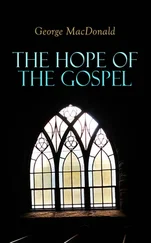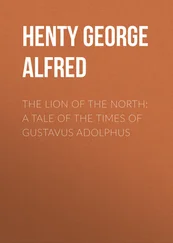George Fitch - The Critic in the Orient
Здесь есть возможность читать онлайн «George Fitch - The Critic in the Orient» — ознакомительный отрывок электронной книги совершенно бесплатно, а после прочтения отрывка купить полную версию. В некоторых случаях можно слушать аудио, скачать через торрент в формате fb2 и присутствует краткое содержание. Жанр: periodic, foreign_antique, foreign_prose, на английском языке. Описание произведения, (предисловие) а так же отзывы посетителей доступны на портале библиотеки ЛибКат.
- Название:The Critic in the Orient
- Автор:
- Жанр:
- Год:неизвестен
- ISBN:нет данных
- Рейтинг книги:5 / 5. Голосов: 1
-
Избранное:Добавить в избранное
- Отзывы:
-
Ваша оценка:
- 100
- 1
- 2
- 3
- 4
- 5
The Critic in the Orient: краткое содержание, описание и аннотация
Предлагаем к чтению аннотацию, описание, краткое содержание или предисловие (зависит от того, что написал сам автор книги «The Critic in the Orient»). Если вы не нашли необходимую информацию о книге — напишите в комментариях, мы постараемся отыскать её.
The Critic in the Orient — читать онлайн ознакомительный отрывок
Ниже представлен текст книги, разбитый по страницам. Система сохранения места последней прочитанной страницы, позволяет с удобством читать онлайн бесплатно книгу «The Critic in the Orient», без необходимости каждый раз заново искать на чём Вы остановились. Поставьте закладку, и сможете в любой момент перейти на страницу, на которой закончили чтение.
Интервал:
Закладка:
This courtesy and good nature among the poorest class of the Japanese people is not confined to their treatment of foreigners; it extends to all their daily relations with one another. A nearly naked coolie pulling a heavy cart begs a light for his cigarette with a bow that would do honor to a Chesterfield.
A street blockade that in New York or San Francisco would not be untangled without much profanity and some police interference is cleared here in a moment because everyone is willing to yield and to recognize that the most heavily burdened has the right of way.
In all my wanderings by day or night in the large Japanese cities I never except once saw a policeman lift his, hand to exercise his authority. This exception was in Tokio, where a band of mischievous schoolboys was following a party of gayly dressed ladies in rickshaws and laughing and chattering. The guardian of the peace admonished them with a few short, crisp words, and they scuttled into the nearest alleys.
The industry of the people, whether in city or country, is as amazing as their courtesy. The Japanese work seven days in the week, and the year is broken only by a few festivals that are generally observed by the complete cessation of labor. In the large cities work goes on in most of the shops until ten or eleven o'clock at night, and it is resumed at six o'clock the next morning.
The most impressive spectacle during several night rides through miles of Tokio streets was the number of young lads from twelve to sixteen years of age who had fallen asleep at their tasks. With head pillowed on arm they slumbered on the hard benches, where they had been working since early morning, while the older men labored alongside at their tasks.
From the train one saw the rice farmer and his wife and children working in the paddy fields as long as they could see. These people do not work with the fierce energy of the American mechanic, but their workday is from twelve to fourteen hours and, considering these long hours, they show great industry and conscientiousness.
In some places women were employed at the hardest work, such as coaling ships by hand and digging and carrying earth from canals and ditches.
Scarcely less impressive than the tireless industry of the people is the enormous number of children that may be seen both in city and country. It was impossible to get statistics of births, but any American traveling through Japan must be struck with the fact that this is a land not threatened by race suicide.
Women who looked far beyond the time of motherhood were suckling infants, while all the young women seemed well provided with children. Girls of five or six were playing games with sleeping infants strapped to their backs, and even boys were impressed into this nursery work. The younger children are clothed only in kimonos, so that the passer-by witnesses many strange sights of naked Japanese cherubs.
In all quarters of Tokio the children were as numerous as in tenement streets of American cities on a Sunday afternoon, and in small country towns the number of children seemed even greater than in the big cities.
Another feature of Japanese life that made a profound impression on me was the pilgrimage of school children to the various sacred shrines throughout the empire. At Nikko and at Nara, two of the great seats of Buddhist and Shinto shrines, these child pilgrims were conspicuous. They were seen in bands of fifty or seventy-five, attended by tutors. The boys were dressed in blue or black jackets, white or blue trousers and white leggings. Each carried his few belongings in a small box or a handkerchief and each had an umbrella to protect him from the frequent showers.
The girls had dark red merino skirts, with kimono waists of some dark stuff. Many were without stockings, but all wore straw sandals or those with wooden sole and heavy wooden clogs. School children are admitted to temples and shrines at half rates and in every place the guides pay special attention to these young visitors.
Pilgrimages of soldiers and others are also very common. Whenever a party of one hundred is formed it receives the benefit of the half-rate admission. No observant tourist can fail to see that in the pilgrimages of these school children and these soldiers the authorities of new Japan find the best means of stimulating patriotism. Church and State are so closely welded that the Mikado is regarded as a god. Passionate devotion to country is the great ruling power which separates Japan from all other modern nations.
The number of young men who leave their country to escape the three years' conscription is very small. The schoolboy in his most impressionable years is brought to these sacred shrines; he listens to the story of the Forty-seven Ronins and other tales of Japanese chivalry; his soul is fired to imitate their self-sacrificing patriotism. The bloody slopes of Port Arthur witnessed the effect of such training as this.
The Japanese Capital and Its Parks and Temples
Tokio, the capital of Japan, is a picturesque city of enormous extent and the tourist who sees it in two or three days must expect to do strenuous work. The city, which actually covers one hundred square miles, is built on the low shore of Tokio bay and is intersected by the Sumi river and a network of narrow canals. The river and these canals are crossed by frequent bridges. At night the tourist may mark his approach to one of these canals by the evil odors that poison the air. Even in October the air is sultry in Tokio during the day and far into the night, but toward morning a penetrating damp wind arises.
Although Tokio's main streets have been widened to imposing avenues that run through a series of great parks, the native life may be studied on every hand – for a block from the big streets, with their clanging electric cars, one comes upon narrow alleys lined with shops and teeming with life. Here, for the first time, the tourist sees Japanese city life, only slightly influenced by foreign customs. The streets are not more than twelve or fifteen feet wide, curbed on each side by flat blocks of granite, seldom more than a foot or eighteen inches wide. These furnish the only substitute for a sidewalk in rainy weather, as most of the streets are macadamized. A slight rainfall wets the surface and makes walking for the foreigner very disagreeable. The Japanese use in rainy weather the wooden sandal with two transverse clogs about two inches high, which lifts him out of the mud. All Japanese dignitaries and nearly all foreigners use the jinrikisha, which has the right of way in the narrow streets. The most common sound in the streets is the bell of the rickshaw man or his warning shout of "Hi! Hi!"
My first day's excursion included a ride through Shiba and Hibiya parks to Uyeno Park, the resting place of many of the shoguns. This makes a trip which will consume the entire day. Shiba Park is noteworthy for its temples (which contain some of the most remarkable specimens of Japanese art) and for the tombs of seven of the fifteen shoguns or native rulers who preceded the Mikado in the government of Japan. The first and third shoguns are buried at Nikko, while the fourth, fifth, eighth, ninth, eleventh and thirteenth lie in Uyeno Park, Tokio. These mortuary chapels in Shiba Park are all similar in general design, the only differences being in the lavishness of the decoration. Out of regard for the foreign visitor it is not necessary to remove one's shoes in entering these temples, as cloth covers are provided. Each temple is divided into three parts – the outer oratory, a corridor and the inner sanctum, where the shogun alone was privileged to worship. The daimyos or nobles were lined up in the corridor, while the smaller nobles and chiefs filled the oratory. It would be tedious to describe these temples, but one will serve as a specimen of all. This is the temple of the second shogun, which is noteworthy for the beauty of the decoration of the sanctum and the tomb.
Читать дальшеИнтервал:
Закладка:
Похожие книги на «The Critic in the Orient»
Представляем Вашему вниманию похожие книги на «The Critic in the Orient» списком для выбора. Мы отобрали схожую по названию и смыслу литературу в надежде предоставить читателям больше вариантов отыскать новые, интересные, ещё непрочитанные произведения.
Обсуждение, отзывы о книге «The Critic in the Orient» и просто собственные мнения читателей. Оставьте ваши комментарии, напишите, что Вы думаете о произведении, его смысле или главных героях. Укажите что конкретно понравилось, а что нет, и почему Вы так считаете.












